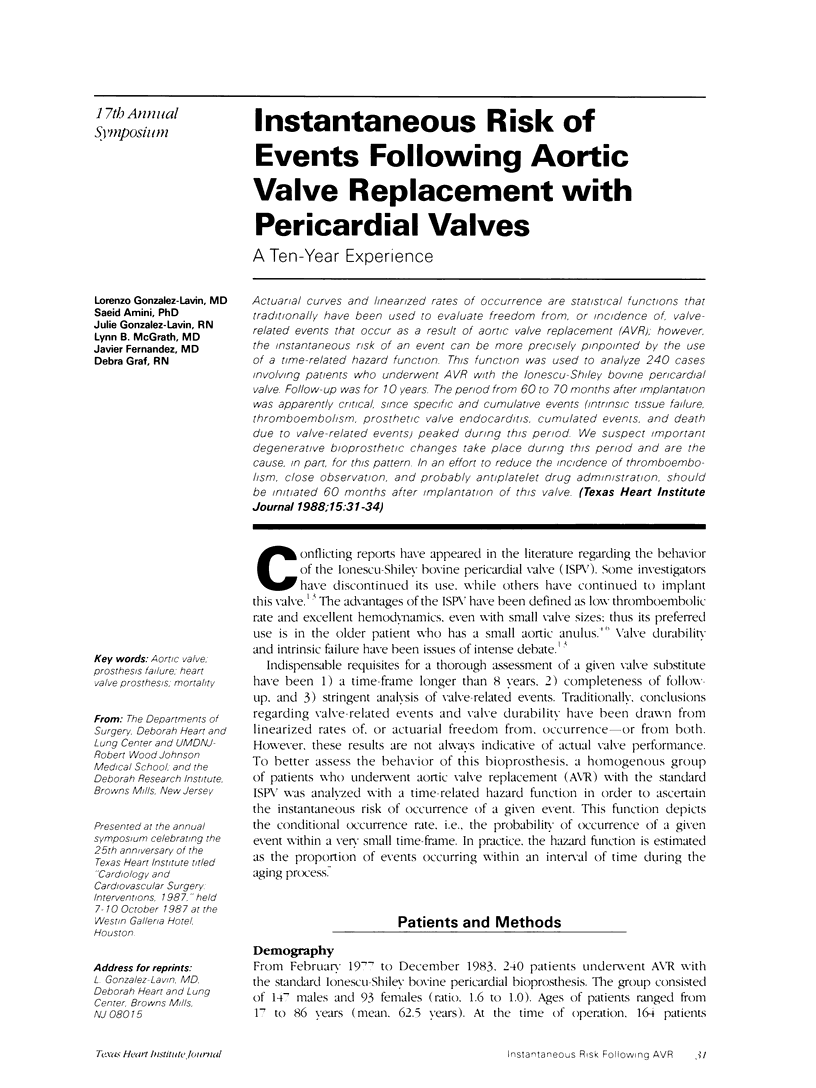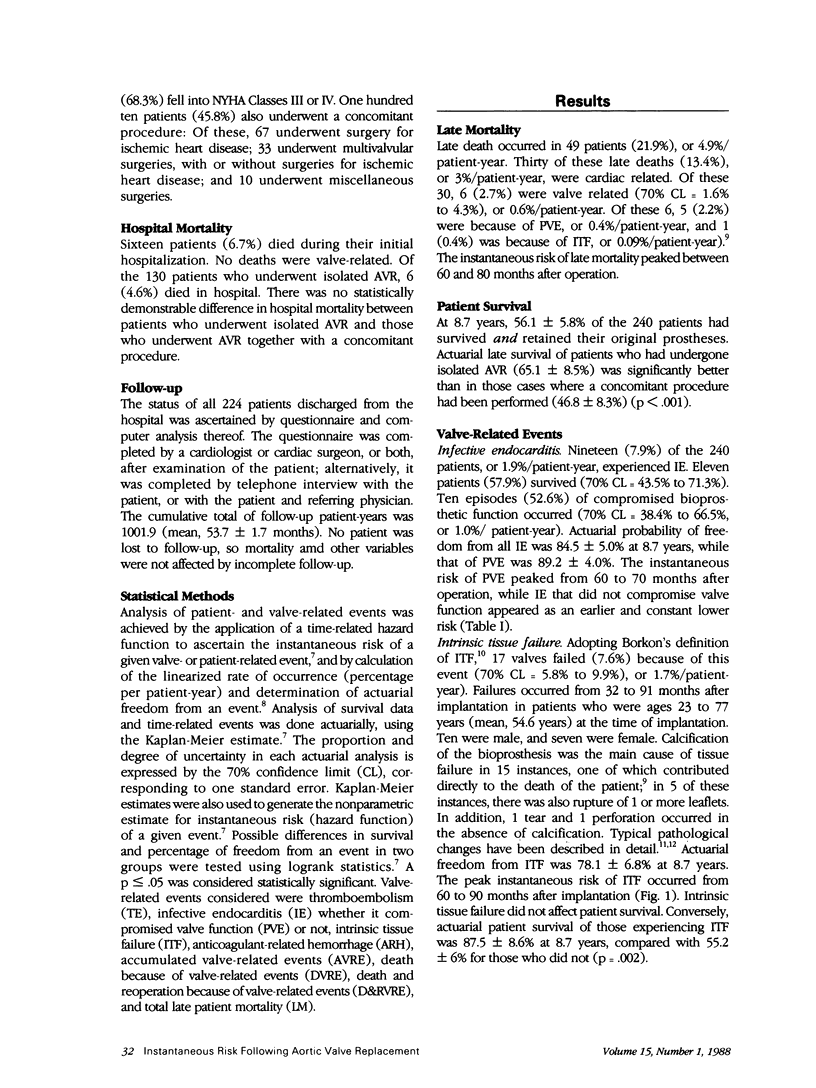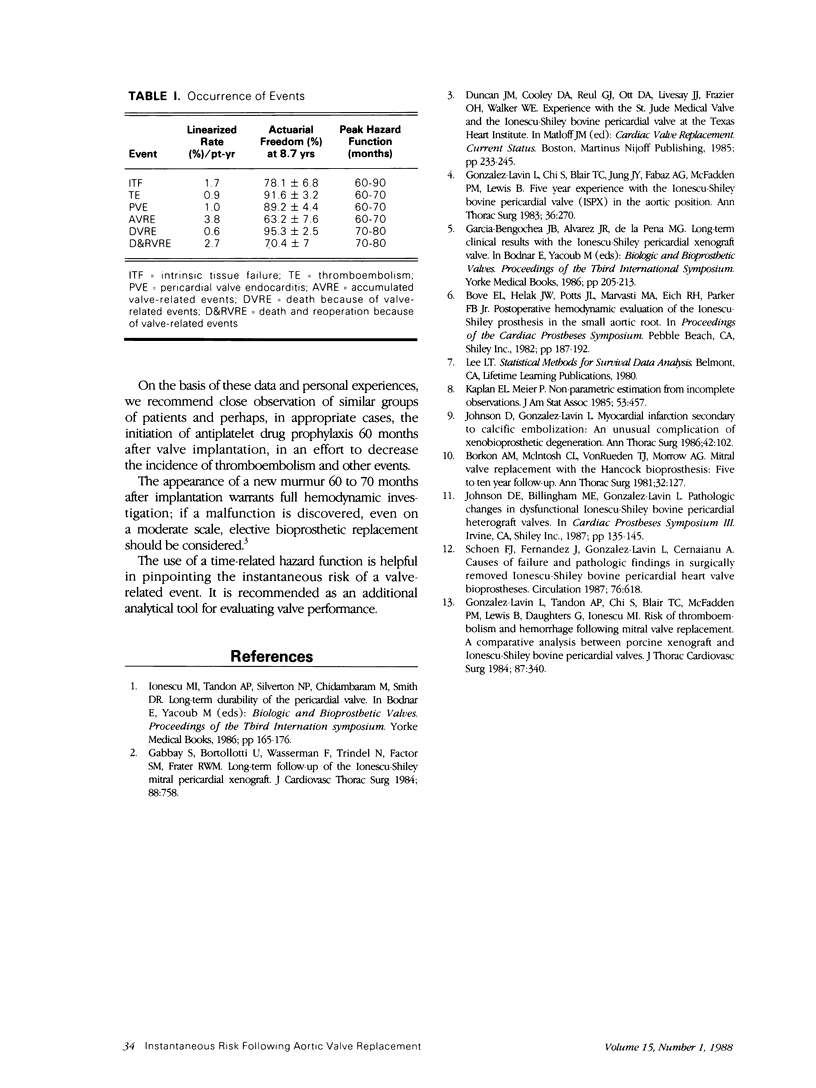Abstract
Actuarial curves and linearized rates of occurrence are statistical functions that traditionally have been used to evaluate freedom from, or incidence of, valve-related events that occur as a result of aortic valve replacement (AVR); however, the instantaneous risk of an event can be more precisely pinpointed by the use of a time-related hazard function. This function was used to analyze 240 cases involving patients who underwent AVR with the Ionescu-Shiley bovine pericardial valve. Follow-up was for 10 years. The period from 60 to 70 months after implantation was apparently critical, since specific and cumulative events (intrinsic tissue failure, thromboembolism, prosthetic valve endocarditis, cumulated events, and death due to valve-related events) peaked during this period. We suspect important degenerative bioprosthetic changes take place during this period and are the cause, in part, for this pattern. In an effort to reduce the incidence of thromboembolism, close observation, and probably antiplatelet drug administration, should be initiated 60 months after implantation of this valve. (Texas Heart Institute Journal 1988;15:31-34)
Keywords: Aortic valve
Keywords: prosthesis failure
Keywords: heart valve prosthesis
Keywords: mortality
Full text
PDF





